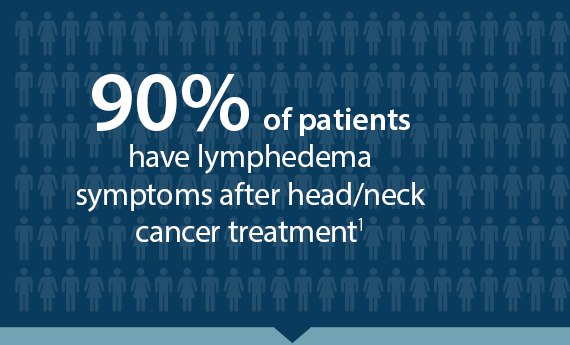


MAKE THE CONNECTION
between head and neck cancer and lymphedema
A healthy lymphatic system moves lymph fluid throughout the body. During cancer treatment, tumors, surgery and radiation can cause damage to the lymphatics. This damage can cause the lymph fluid to pool instead of flow, leading to debilitating internal and external swelling.
This is lymphedema.
The Signs and Symptoms of Lymphedema*
- Dysphagia
- Pain, discomfort, tightness
- Scarring or fibrosis
- Reduced range of motion
- Difficulty breathing
- Swelling – internal and external
- Vocal changes or difficulty speaking
* American Society of Clinical Oncology
1. Ridner, S.H., et al., A prospective Study of the Lymphedema and Fibrosis Continuum
in Patients with Head and Neck Cancer. Lymphat Res Biol, 2016. 14(4): p. 198-205

Lymphedema Can Be External and Internal
Lymphedema is a chronic,
progressive disease.
Untreated swelling
leads to fibrosis.
How to Identify Lymphedema
CT Scan
FEES (Fiberoptic Endoscopic Evaluation
of Swallowing)
Seven-month post treatment scan2:
- Submental Swelling
- Epiglottis thickened
- Prevertebral soft tissue swelling at C3
2. Deng J, et al. Assessment and measurement of head and neck lymphedema: State-of-the-science and future directions. Oral Oncology. 2015 51 (431-437)
HOW TO TREAT LYMPHEDEMA
In-Clinic Treatment:
- Lymphedema therapy
- Speech pathology

Daily Home Treatment:
- Lymphatic drainage via pneumatic compression
- Compression/exercise
- Elevation while sleeping












